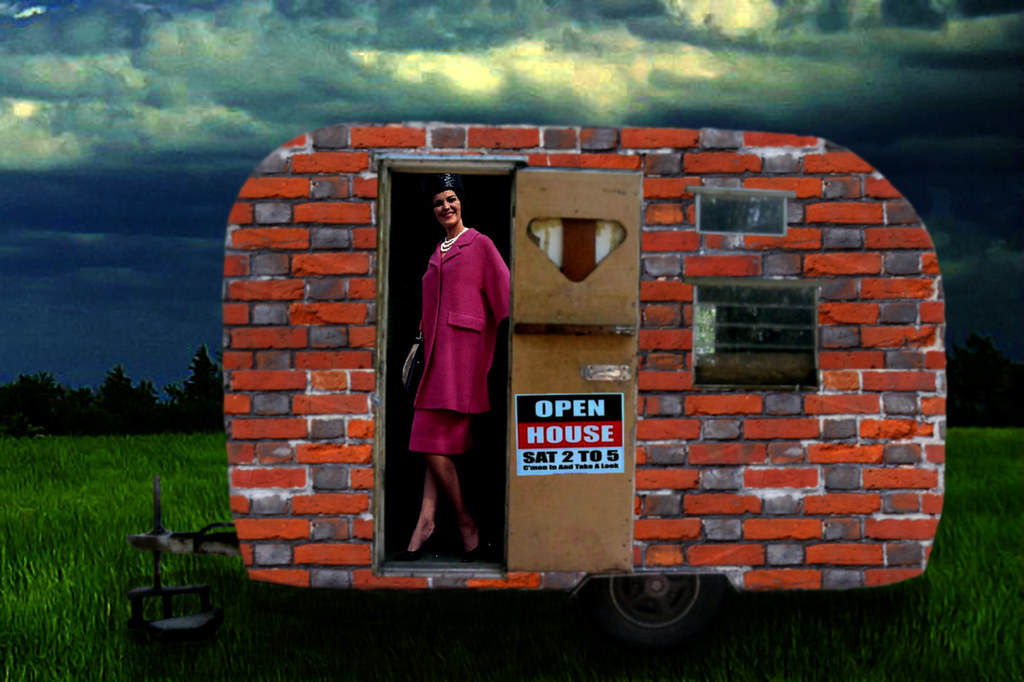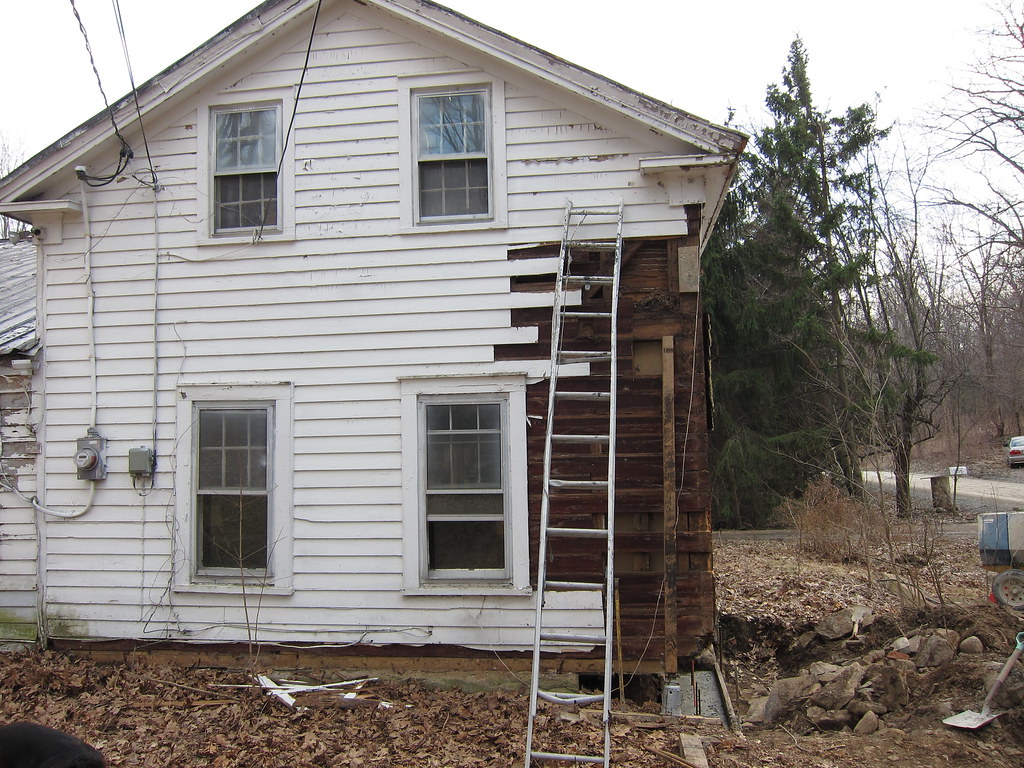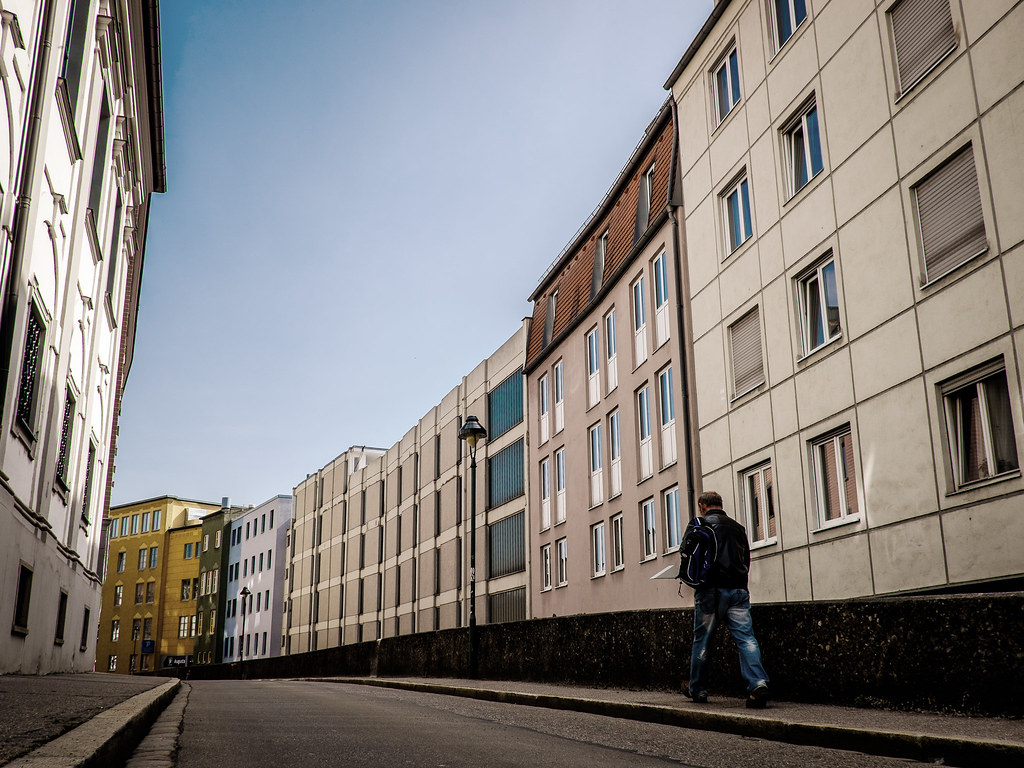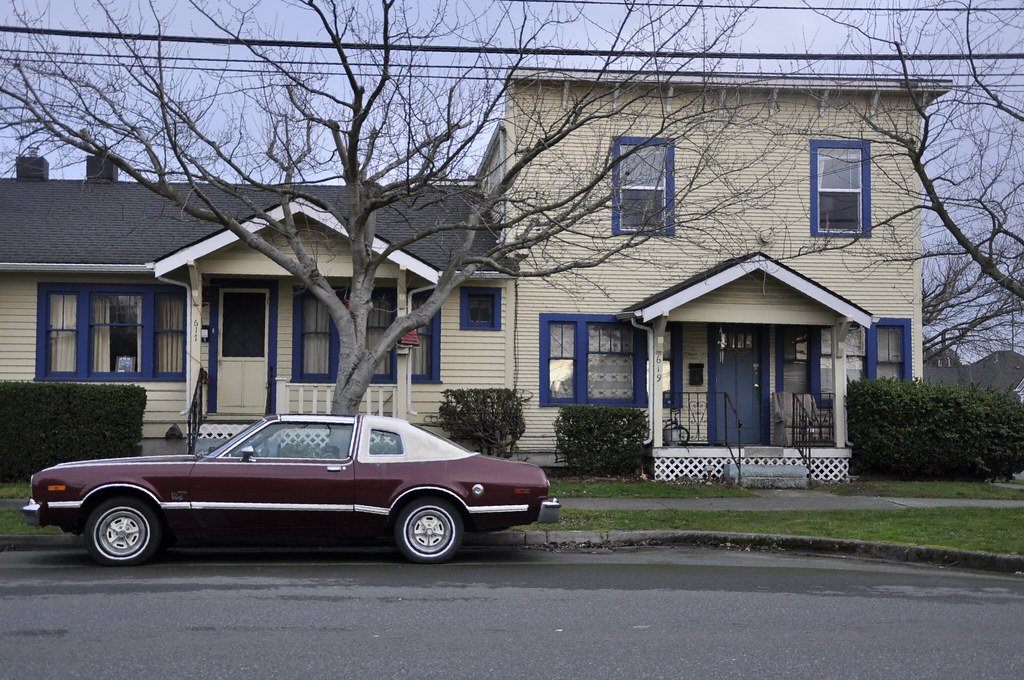
The American housing market currently presents a significant paradox: millions of homes lie vacant nationwide, even as the country contends with a documented housing shortage and a severe affordability crisis. This seeming contradiction demands a thorough examination, moving beyond simple supply and demand narratives, to understand why these properties remain unoccupied. A deeper insight into these dynamics is crucial for all stakeholders.
A recent LendingTree study identified 5.6 million vacant homes across the U.S., with an average vacancy rate of 7.37% in the 50 largest metro areas. This substantial figure, however, does not directly translate into an abundance of available housing options. The U.S. Census Bureau defines “vacant” broadly, encompassing everything from second homes to properties stalled in legal processes or undergoing rental transitions.
This analysis aims to unpack the multifaceted reasons behind these residential vacancies, elucidating why properties frequently sit empty instead of being offered for sale or rent at lower rates. From seasonal getaways and strategic investment holdings to complex legal entanglements and properties requiring extensive repairs, a confluence of factors contributes to this persistent issue. These elements collectively complicate efforts to ease the housing shortage and mitigate rising costs for everyday Americans. We will now explore seven critical drivers of residential property vacancies.

1. **Vacation Homes and Seasonal Properties**A significant portion of America’s vacant homes comprises properties designated for seasonal or recreational use. Approximately one-third (32.8%) of all vacant homes fall into this category, particularly concentrated in popular warm-weather destinations like Florida and Arizona. These residences serve as second homes, occupied only during specific times of the year, such as holidays, leaving them empty for extended periods.
Cities like Scottsdale, Arizona, and Miami Beach, Florida, vividly illustrate this trend, with vacation homes making up over half of their vacant properties. While these can be lucrative for investors, their primary purpose is not year-round local residency. This dynamic contributes to the overall vacancy rate without increasing the actual supply of affordable housing for permanent residents.
The prevalence of these getaway homes profoundly impacts local housing markets. Realtor Joy Aumann observed that in South Florida, they are “driving up domestic costs and making it more troublesome” for locals to afford a house. Such properties reduce the inventory of full-time residences, inflating prices and forcing local buyers, often with moderate incomes, to compete with out-of-towners possessing greater purchasing power, further exacerbating the housing shortage.
Read more about: Los Angeles: A Tapestry of Histories, Demographics, and Enduring Challenges

2. **Investment Properties Beyond Vacation Homes**Beyond vacation homes, a substantial number of vacant properties are held purely as investment vehicles, not necessarily for immediate occupancy or sale. Investors, ranging from individuals to larger entities, acquire these properties anticipating future value appreciation. They often keep them empty for extended periods, believing the property’s value will increase significantly over time, thereby offsetting the costs of vacancy.
This strategy involves a calculated decision to capitalize on anticipated market upturns, avoiding the complexities of tenant management or potential depreciation from continuous use. It is particularly common in cooling markets, where owners prefer to wait for a rebound rather than sell at a perceived discount. Such properties, though statistically vacant, are intentionally withheld from the active market supply.
These strategic holdings do not alleviate the housing shortage; instead, they effectively remove supply from the market. Owners prioritize future appreciation over immediate cash flow or contributing to housing availability, highlighting a key divergence between statistical vacancy rates and genuine housing options. This speculative approach significantly influences housing accessibility and affordability for the general public.
Read more about: Beyond the Headlines: The Profound Influence of Baby Boomers on Today’s US Housing Market

3. **Abandoned Homes in Low-Demand Areas**A distinct category of vacant homes are those genuinely abandoned, a phenomenon most prevalent in cities experiencing economic decline and low demand. These properties often symbolize industrial shifts, population exodus, and prolonged economic struggles. Detroit, Michigan, serves as a prominent example, where the auto industry’s decline led to significant population loss and a surge in abandoned homes.
In such areas, properties often sit derelict, unmaintained, and susceptible to vandalism for years. Cities frequently resort to demolition due to safety concerns and their detrimental effect on surrounding property values and community aesthetics. These vacancies are directly linked to underlying economic difficulties, where market conditions simply do not support new investment or occupancy.
Even if offered at nominal prices, these severely dilapidated homes find few takers due to prohibitive renovation costs and a fundamental lack of demand. They highlight that not all vacant properties are viable housing solutions. Their reintroduction into the housing supply requires substantial community investment and economic revitalization, distinguishing them from properties held vacant for opportunistic reasons.

4. **Homes in Legal Limbo**Many residential properties remain vacant not due to market strategy, but because they are caught in complex legal entanglements. These “homes stuck in legal limbo” significantly contribute to the vacancy rate, particularly when ownership is unclear or contested. Common scenarios include properties where owners have died, and heirs are unaware or the probate process is protracted.
Without a clear, active owner, these homes often sit unoccupied, unmaintained, and off the market for extended periods. Legal processes—transferring ownership, resolving disputes, or settling estates—can span years, effectively freezing the property. This complexity intensifies if original owners were non-residents or undocumented, making it harder to identify heirs or establish legal control.
During this legal paralysis, properties can deteriorate, mirroring abandoned conditions if neglected. The intricate web of paperwork and disputes hinders local agencies from intervening or facilitating sales, even amidst clear housing needs. Consequently, these homes, while physically present, are functionally unavailable to the housing market, a systemic barrier unaddressed by price adjustments alone.

5. **Properties Requiring Extensive Repair**A substantial portion of vacant homes comprises those in significant disrepair, rendering them unsuitable for immediate occupancy. These properties, often foreclosures or buildings neglected for years, demand extensive renovations and financial investment to become move-in ready. As stated, “not every vacant home is available to buy — and many aren’t move-in ready,” a crucial distinction.
When a home suffers from advanced dilapidation, with issues like a failing roof or structural damage, rehabilitation costs can be prohibitive. This challenge is particularly acute for individual homebuyers lacking capital or expertise for such projects. Even investors may hesitate if repair costs outweigh potential future profits or if market conditions do not justify the investment.
These properties are practically removed from the active housing supply. Though technically “vacant,” they offer no immediate solution for housing seekers. Their rehabilitation requires considerable financial outlay, time, and specialized labor, making their path to market lengthy. Such homes contribute to vacancy rates without alleviating the housing shortage, highlighting the need for solutions beyond simple price adjustments.
Read more about: Owner-Proven Champions: 11 SUVs That Defy Mileage Limits and the Maintenance Secrets to Their 250,000-Mile Journeys

6. **”Waiting for the Right Buyer” in Cooling Markets**In certain housing markets, especially those undergoing a slowdown, owners of vacant homes often adopt a strategy of “waiting for the right buyer.” This approach, driven by a desire to maximize investment returns, involves holding properties off the market or setting ambitious asking prices, even if it means prolonged vacancy. The expectation is that market conditions will eventually improve, enabling a more profitable sale.
Asheville, North Carolina, exemplifies this, boasting the highest share of vacant homes actively for sale (16%). This situation arises from “high prices and a mismatch between what’s on the market and what buyers want.” Sellers, accustomed to previous market highs, may be reluctant to lower expectations to match current demand or buyer affordability.
This strategic holding creates extended vacancies as sellers prioritize financial gain over a quick transaction. While technically “for sale,” these properties are effectively removed from accessible supply due to a misalignment in valuation. Buyers, meanwhile, may be “on the sidelines, waiting for the market to correct” further. This dynamic bottlenecks supply, contributing to the paradox of empty homes as owners await optimal selling conditions.

7. **Rental Properties Between Tenants**Rental properties temporarily empty during tenant transitions represent a notable, often overlooked, contributor to the overall vacancy rate. These homes are not abandoned or indefinitely withheld; rather, they are being prepared for new renters through cleaning, minor repairs, or marketing efforts. This includes properties listed “for rent” that simply haven’t secured a new occupant yet.
The U.S. Census Bureau’s definition of “vacant” encompasses these properties, counting them as empty if no one resides there at the survey time. As LendingTree senior economist Jacob Channel clarified, many properties are “temporarily vacant due to rental transitions.” This phenomenon is accentuated by increased rental inventory in many markets, leading to longer periods where properties sit empty while awaiting tenants.
While typically short-term, these vacancies add to the overall count of unoccupied homes. The duration varies with market conditions, property state, and landlord efficiency. In tighter markets, transitions are brief, but increased inventory can prolong vacancy, thus contributing more substantially to statistics. Understanding this category is crucial to accurately interpreting vacancy rates, distinguishing them from long-term housing options.
Read more about: Green Buildings: Why the Long-Term Benefits Outweigh the Initial Costs

8. **Commercial Real Estate: A Different Economic Equation** While the residential market grapples with its unique set of vacancy challenges, the realm of commercial real estate operates under an entirely different economic logic, dictating why storefronts and office spaces might remain empty for extended periods. The question, “Why leave these spaces empty? Why not lower the rates on the rents, rather than letting these properties sit, vacant, year after year?” is frequently asked by the public. The answer often lies in intricate business decisions that prioritize long-term asset value over immediate occupancy.
One significant factor is when a tenant, despite moving out of a space, continues to fulfill their lease obligations by paying rent. In such a scenario, a landlord has little financial incentive to actively seek a new occupant, as their income stream remains uninterrupted. This situation, while perhaps frustrating for those observing the vacant storefront, is a straightforward business arrangement where the existing tenant’s commitment to their lease agreement holds precedence, effectively removing the property from the active rental market.
Unlike residential leases that typically span one to two years, commercial leases often extend for much longer durations, sometimes ranging from five to an astonishing twenty years. This fundamental difference means that a landlord’s decision today about rent pricing will reverberate for many years into the future. Agreeing to a significantly lower rent now could lock in a reduced income stream for a substantial period, making them hesitant to compromise their long-term financial projections.

9. **The Peril of Devaluing Property: Landlords’ Strategic Resistance to Lowering Rent** A core principle guiding commercial landlords’ decisions is the preservation of their property’s valuation, a factor that profoundly influences their willingness to lower rents. Commercial properties are valued, in large part, based on the income they generate. Consequently, any reduction in rent levels can have a substantial negative impact on the perceived and actual value of their entire portfolio, not just a single vacant unit. This makes them highly resistant to price cuts that could ripple across their holdings.
This strategic stance is not merely about maximizing profit but also about safeguarding their financial stability. Lower valuations could trigger default provisions within their loan documents, which frequently contain clauses tying the building’s performance and value to the lender’s continued agreement to finance the property. An owner might prefer to endure a retail store’s vacancy rather than signal to a lender that their property value has declined, potentially jeopardizing their loan terms or even facing foreclosure.
Furthermore, the fear of setting a market precedent is a potent deterrent. If a landlord lowers the rent on one vacant commercial space, it can create an expectation among existing tenants that their leases should also be renewed at a reduced rate. This domino effect could force them to lower rents across all their properties when it comes to renew leases, leading to a much larger and more damaging reduction in overall income and property value than the impact of a single vacant unit.

10. **Long-Term Leases, Long-Term Decisions: Why Landlords Wait** The extended duration of commercial leases is a primary driver behind a landlord’s decision to wait for “the right tenant” rather than accept a quick, lower-rent deal. When a lease can span a decade or more, securing a tenant who not only pays well but also complements the existing tenant mix and contributes to the overall vibrancy of a commercial center becomes paramount. A hasty decision to fill a space at a reduced rate could lock in a “20-year bad deal,” as one expert noted, significantly diminishing the property’s potential income stream and market appeal for a considerable time.
Landlords often consider the long-term vision for their properties, meticulously curating tenant rosters that enhance the overall value and desirability of their commercial spaces. This strategic patience means they are less likely to accept a tenant who may not align with their long-term goals or whose business model might not prove sustainable. The upfront costs of tenant improvements and commissions for new leases are substantial, reinforcing the need for a stable, high-quality tenant who will remain for the long haul.
This deliberate approach to tenant selection and rent setting underscores a fundamental difference from the residential market, where high turnover is more common and lease terms are shorter. For commercial property owners, the decision to leave a space vacant for months or even years is a calculated risk, weighed against the potential for a much more lucrative and stable income from a well-matched, long-term tenant. It is a testament to their commitment to preserving the asset’s value and ensuring its long-term profitability.

11. **Beyond Supply and Demand: The Broader Market Forces in Commercial Vacancy** While individual landlord strategies play a significant role, broader market forces of supply and demand also exert considerable influence on commercial property vacancies, sometimes making rent reductions ineffective. There are occasions when there are simply “too many stores available and too few retailers wanting those spaces.” In such a saturated market, even a substantial lowering of rent may not attract new tenants if the underlying local economic conditions do not support new business ventures or expansion.
Local economic forces, such as shifts in consumer spending habits, the rise of e-commerce, or a decline in population, can fundamentally alter the demand landscape for commercial spaces. A storefront in a struggling retail corridor, for instance, might remain empty not because its rent is too high in absolute terms, but because the foot traffic and economic vitality necessary to sustain a business simply aren’t present. In these situations, the problem extends far beyond mere pricing adjustments; it reflects a deeper structural imbalance in the local economy.
This dynamic highlights that not all vacancies can be solved with a simple price cut. For some commercial properties, the challenge is not just about competing on rent, but about the very viability of operating a business in that location. Owners facing these macro-economic headwinds might find themselves in a holding pattern, hoping for a broader economic revitalization that might bring new businesses and demand back to their areas, rather than engaging in a futile race to the bottom on rent.

12. **The Billionaire Class and Hyper-Gentrification: A New Housing Paradigm** Shifting our focus from commercial to the broader housing landscape, an alarming phenomenon is the increasing concentration of wealth and power, significantly driven by the “billionaire class and billionaire-backed private equity investors.” These entities have emerged as a driving force exacerbating the U.S. housing crisis, moving beyond traditional supply and demand narratives to fundamentally reshape market dynamics. With roughly 800 billionaires in the U.S. possessing a combined wealth of $6.2 trillion, a vast portion of this capital finds its way into property, land, and housing.
This influx of ultra-wealthy investment fosters what has been termed “hyper-gentrification.” It’s not the conventional gentrification of yesteryear but an accelerated, wealth-fueled process that dramatically inflates land and housing costs. Billionaire investors frequently treat housing as a mere commodity for speculation or a convenient vehicle to park vast quantities of global wealth, rather than as essential shelter. This approach leads to an expansion of short-term rentals and luxury housing schemes, further diminishing the supply of affordable long-term residences for everyday Americans.
The Institute for Policy Studies and Popular Democracy’s report, “Billionaire Blowback on Housing,” sheds light on the myriad ways these investors harm local housing markets. They effectively displace existing residents, with the report observing that “the billionaires are displacing the millionaires, and the millionaires are disrupting the housing market for everyone else.” This chain reaction demonstrates how concentrated wealth creates ripple effects that elevate housing costs across the entire spectrum, pushing homeownership out of reach for a growing number of families.

13. **Wall Street’s Foothold: Institutional Investment in Single-Family Rentals** A particularly impactful facet of this billionaire-backed investment trend is the significant and growing presence of institutional investors in the single-family rental (SFR) market. Post-2008 financial crisis, with government backing, large investment firms saw a “rare opportunity” to acquire vast portfolios of foreclosed properties. Since the early 2010s, major players like Tricon Residential, Progress Residential, American Homes 4 Rent, and Invitation Homes have collectively purchased thousands of homes, fundamentally altering the landscape of what was once primarily an individual landlord market.
These corporate landlords are often financed by formidable private equity firms, such as Blackstone, and investment managers like Pretium Partners. Blackstone, for example, has grown into the world’s largest corporate landlord, managing over 300,000 residential units across the U.S. as part of its $1 trillion global asset portfolio. This massive consolidation of ownership allows these entities to exert considerable influence over rental markets, shaping prices and availability in ways individual landlords rarely could.
Critics argue that this institutional acquisition creates what Jordan Ash, director of labor-jobs and housing at the Private Equity Stakeholder Project, describes as an “almost captive market.” These firms, Ash notes, have been “very explicit about how people are shut out of the homebuying market and are going to be perpetual renters.” This strategy, while profitable for investors, deeply concerns lawmakers like Rep. Ro Khanna, who authored the Stop Wall Street Landlords Act of 2022, lamenting how “your tax dollars are helping Wall Street buy up single-family homes.”

14. **The Future of Housing: Perpetual Renters and Market Concentration** The long-term implications of this institutional shift in housing ownership are profound, pointing towards a future where homeownership becomes an increasingly distant dream for many. MetLife Investment Management forecasts a dramatic increase, predicting that institutional investors may control as much as 40% of U.S. single-family rental homes by 2030, a sharp rise from approximately 5% of the 14 million single-family rentals they owned nationally in early 2022. This trajectory suggests a significant concentration of market power in the hands of a few large corporations.
This burgeoning control has already manifested in fierce housing inflation, particularly evident in Sun Belt states like Texas, Florida, and Georgia. Between January 2020 and January 2023, rents for a two-bedroom detached home soared by about 44% in Tampa, 43% in Phoenix, and 35% near Atlanta, significantly outpacing the national average increase of 24%. While industry advocates maintain they don’t control enough market share to dictate prices, these regional spikes suggest a correlation between institutional presence and rapid rent increases.
As millions of American families struggle with affordability and the aspiration of homeownership, the continued influx of ultra-wealthy investors and corporate landlords transforms housing from a fundamental right into a highly commodified asset. The housing affordability crisis, a central focus during election seasons, is thus not merely a matter of supply and demand, but a complex interplay of concentrated wealth, strategic market manipulation, and evolving ownership structures that disproportionately impact everyday citizens. Addressing this will require a multifaceted approach that extends beyond simply building more homes.
**Concluding Paragraph:**
The paradox of vacant homes amidst a housing crisis, therefore, unravels into a tapestry of intricate economic decisions, strategic landlord behaviors, and the pervasive influence of concentrated wealth. From the calculated vacancies in commercial real estate designed to preserve asset value, to the systemic acquisition of residential properties by ultra-wealthy investors, the reasons homes and storefronts sit empty are far more complex than a simple refusal to lower prices. Understanding these multifaceted dynamics is not just an academic exercise; it is crucial for policymakers, communities, and individuals striving to navigate and ultimately reshape a housing market increasingly defined by financial strategy rather than fundamental human need.



